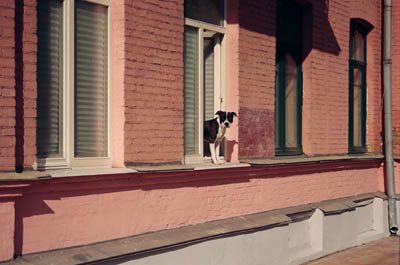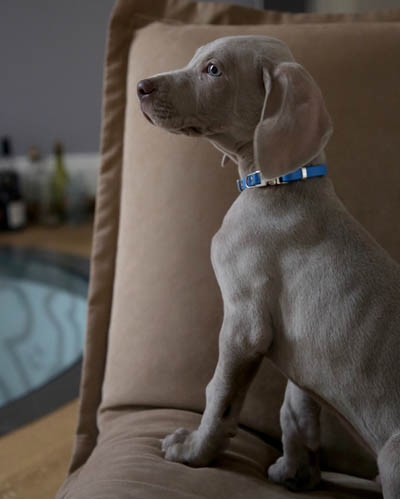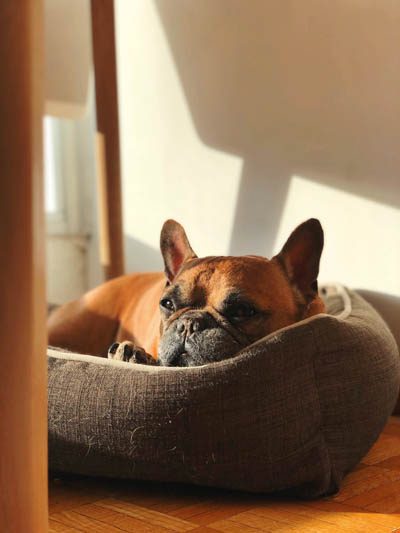We live in extraordinary times and our dogs have probably had more of our attention than usual over the last three months. Any new puppies now know little of being left alone; they have had company practically their whole lives.
As we drift back to work and the children are no longer at home, all this begs the question: how might our dogs be feeling?

Well, if they have had you almost constantly in their lives for weeks, some are going to suffer. Yes, the majority may cope, but, given that around 45% of dogs feel some sort of distress when their owner is away during normal times, I believe there could be a higher percentage of dogs suffering because of the lockdown.
That suffering could range from a mild depression through to destruction of doors, furniture, carpets etc. They may even self-harm.
Recognising The Symptoms
Firstly, realise that your dog may not be suffering from separation anxiety; which is always the first thought owners have when a dog is vocalising or destructive during their absence. Dogs can suffer many forms of distress when being left alone; isolation distress being the most obvious. The dog is not heartbroken that the family are no longer in the house, but it is upset simply by being alone and just doesn’t feel safe.
A dog may also have developed hyper-attachment – this is when it misses one particular member of the household. There is also frustration distress – the dog not having the freedom of the house once the owners have left.
If your dog has already a problem and you are not sure which of the above it is suffering from, you need to seek professional help.
What Can Be Done?

If you had a routine with dog before the coronavirus restrictions, you need to try and get back into that routine soon as possible – even if you are not back at work yet.
Can you remember the process you had in place before you left the house? The dog receiving clear signals as to what is going to happen next is key to it being able to cope. This could be you putting on a uniform or putting something out of reach.
Revisit these cues and then practice them by going out for a short walk, maybe into the garden (as long as your dog can’t see or hear you) or sitting somewhere else in the house quietly for a time. Start with small sessions and build to as long as you need and as gradually as you can.
It is all about the dog understanding what happens next – uncertainty is what leads to stress in dogs. Make sure you remind your dog there are specific triggers that signal it is going to be without you. The dog should return to its old habits even if the memories are quite deep.
If have been paying a lot more attention to your dog during lockdown, it might be best to start with a toning down of this over a week or so before beginning the signal work.
Helping A New Dog To Manage
What if you have a new dog with no process in place to warn them they are about to be on their own? Well, you need to create one.
Firstly, have an idea about what the routine will be for your dog once you are back at work.
- How many days and hours will the house be empty?
- Who is taking responsibility for the dog’s new routine? Hint: It should be everyone!
- What needs to be changed in terms of doors, windows, heating, etc?
- How attached is the dog to each household member?
Now advise the whole household to decrease any interaction with the dog. It’s not fair to be a significant presence in your dog’s day and then withdraw attention suddenly. In psychological terms and in your dog’s mind, it’s equivalent to punishment.
To counteract this, devise a “we’re leaving” memory bridge. This method isn’t a cue like “bye” – although it will probably involve one last farewell – it’s a much longer and stronger signal for the dog to recognise you are leaving it on its own. As an example, I will give you my routine for Evie the German Shepherd when she was a puppy:

Firstly, I would make sure that I was ready to go! I’d check to see I was wearing the right gear, that I had my phone and purse and that the car had everything I needed.
Making sure she was watching, I would then start to put together a little buffet of her favourite foods into her bowl in the kitchen. I would talk her through what I was doing so she was engaged with the idea. I would include a bone or long-lasting chew of some sort.
Continued…
Then, I would take the bowl into the front room and put it on the side somewhere. She would obviously follow because she wanted the contents! I would put the TV on and, standing right in front of it,I would select a programme (when she was a small pup, this was actually also part of her sound-desensitisation training). Once the TV was on, I would ask her to jump on her bed and I’d put her meal down. As soon as I put it down, I would walk away and say “See you later” before leaving.
This memory bridge was really long, but it served two purposes. It gave Evie plenty of time to get the idea I was about to leave. It also gave me plenty of time to assess that she was in a coping mood, that my training was working and that it was OK to leave.
Probably the most crucial aspect of my memory bridge was standing in front of the TV to pick a programme. It’s the only time anyone in the house does this as we are usually sitting down of course – it’s a big cue.
Note that we’ve gradually built up this long routine.
So how do you start?
Well, select a signal and start to create a routine, though perhaps at first don’t leave the house or maybe even the room.

Try this as an example:
- Get out an enrichment toy that the dog is only going to get for this process, eg a kong
- In full view of your dog and with plenty of chat, go through the process of filling the kong (the more interested you are in the kong, the more the dog will want it.).
- Take the kong to where your dog is going to be left (big tip: your dog has to feel safe there. They must be comfortable and undisturbed!).
- Ask your dog to get in their bed, etc.
- Give them the kong.
- Say goodbye and walk away.
- Now ignore them. No words, no eye contact and no touching (you don’t need to leave the house)
- Practice for however long you feel you need to start with.
- Return and pick up the kong.
- Say hello to your dog and go about things as usual.
The kong will now become the signal for removal of attention.
Assess how your dog is coping when repeating this exercise. Don’t worry if it doesn’t work at first. You are creating a memory from scratch. It’s a bit like putting a jigsaw together – it’s going to take time.
What can go wrong? Lots of things! Here are a few examples:
- The dog is over-attached to all or one particular member of the household so you will have to back off with the attention while
- You don’t give yourself enough time to train so you will have to organise family, friends and/or a dog walker to cover when you’re not
- Your dog doesn’t feel safe so keep trying different places.
- Your neigbourhood might be noisy so you will need to reduce the sounds somehow and find the quietest place in the house.

Finally, try to have a routine before leaving your new dog. It’s much easier to put the training in place at the start than having to help a dog that is already anxious. Good observation and problem-solving skills are often needed.
Remember, stress and anxiety can ruin your dog’s health and can affect the human-dog relationship. It can also dramatically change how owners feel about their dogs and it can be expensive!
If you’d like to read more of our articles about looking after your dog, click here.

